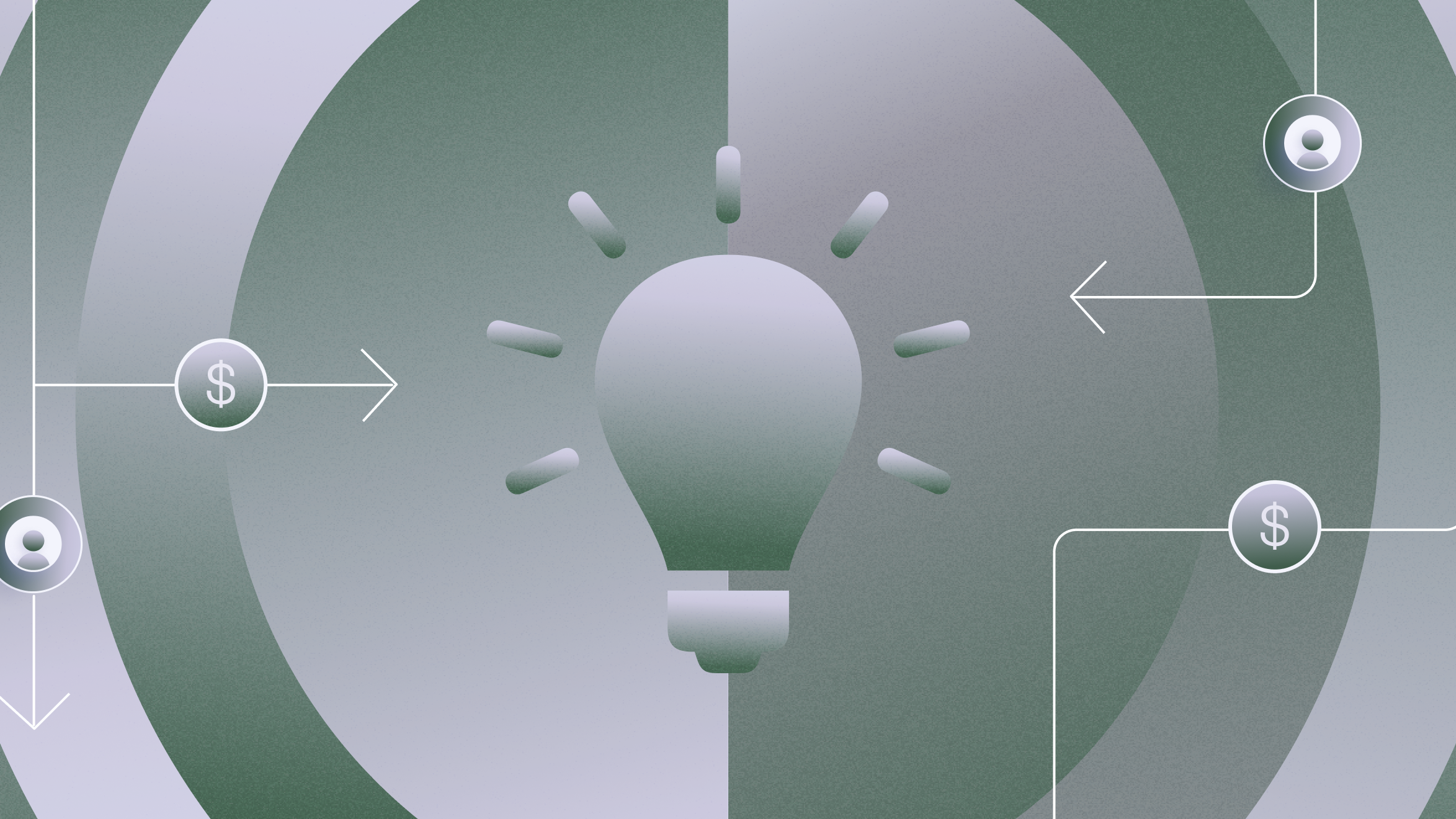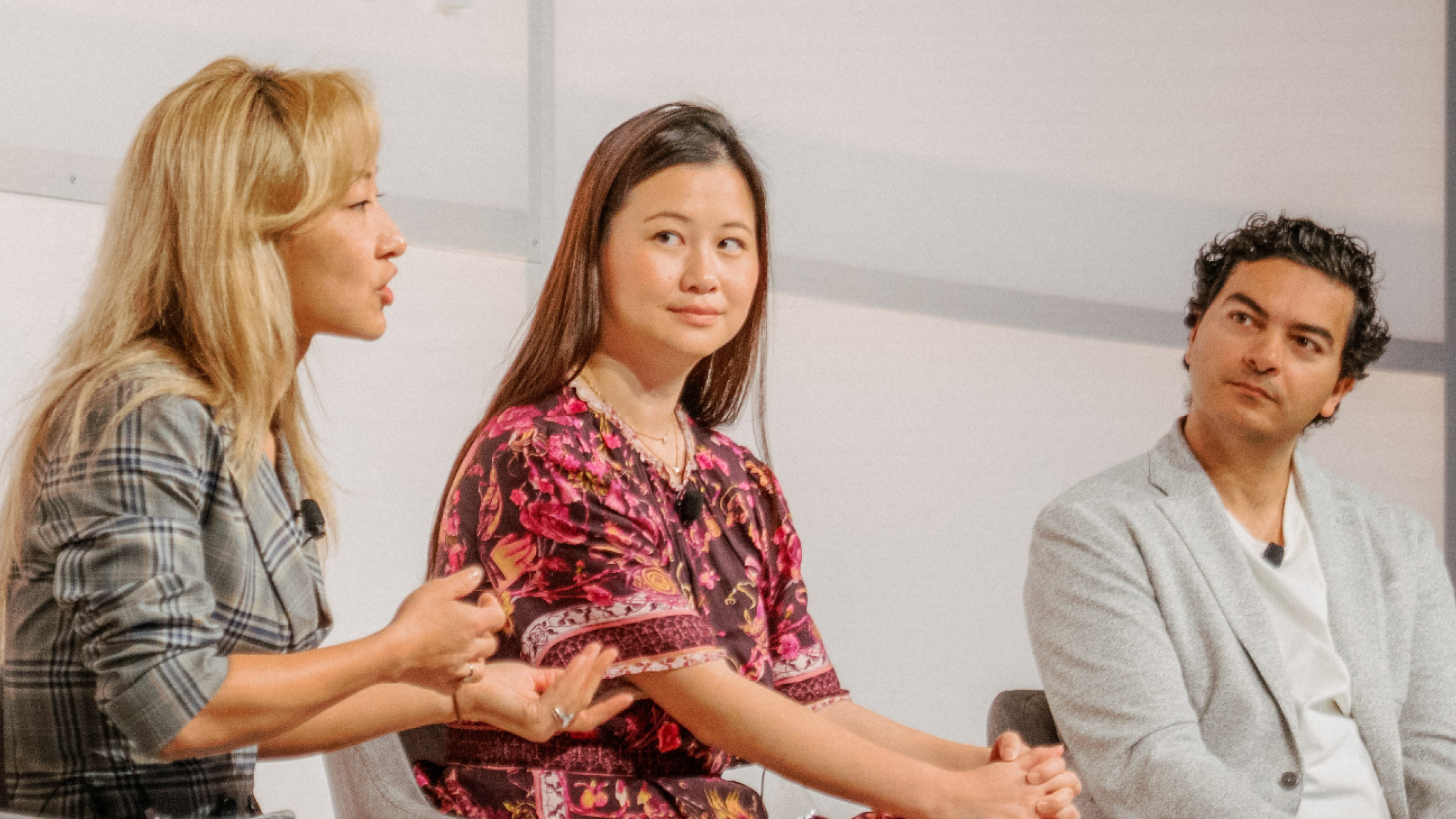SAFEs: Understanding what they are, why they matter, and their role in your startup’s next raise

If you’ve considered venture capital, you’ve likely come across the SAFE (Simple Agreement for Future Equity). SAFEs — often (and incorrectly) referred to as SAFE notes, which SAFE inventor Carolynn Levy doesn't take particularly kindly to — allow founders to get venture capital (VC) money right when they need it while pushing the paperwork, cost, and time required of an equity round to a later date.
And while SAFEs have a number of benefits for founders, they're not without their caveats. For example, it's important to consider how SAFEs can dilute your business, or how to negotiate a valuation cap that won’t limit your business in the future. It's also important to consider the long-term implications of a SAFE agreement before entering into one in lieu of raising through a priced round. Here, we'll break down the ins and outs of how SAFEs work, including how SAFEs turn into equity, the difference between pre-money and post-money SAFEs, and how to negotiate a deal that protects the long-term interests of your startup, including minimal dilution.
What is a SAFE and how do they work?
The SAFE was first created in 2013, during Levy's time at Y Combinator. It’s primarily used by early-stage startups before their seed round. SAFEs allow investors to fund a company in exchange for a stake in a future equity round. A standard SAFE investment is generally equivalent to 15% in equity.
SAFEs can make it easier to close checks from interested investors. Unlike traditional venture capital rounds, which require founders to find lead investors or potentially wrangle several VCs into the same round, a SAFE is built to help you close a deal on the spot.
The standard SAFE today is five pages long and is straightforward (after all, the “S” stands for simple). Most of the time, the only thing you’ll need to negotiate on a SAFE is your valuation cap. Valuation caps can be negotiated based on the amount of risk that an investor is taking on with a SAFE — things like a proven product or incorporation can reduce that risk.
What are the differences between a convertible note and a SAFE?
As you fundraise, you might come across the convertible note. Like SAFEs, a convertible note is a convertible security, meaning it’s agreed upon at one point in time, but only activated at a later date. Unlike SAFEs, convertible notes act like debt — they gather interest, require repayment, and need to be paid off by a certain date. If they’re not paid off on time, they can even trigger bankruptcy. A lot of these complexities are what have caused convertible notes to fall out of popularity in recent years in the technology industry.
“The one thing that irks me is when people call it a SAFE note. It’s just SAFE and it’s not a note. We wrote it so it was different from the convertible note, to show that it was equity and not debt, that it was meant to be founder friendly, and philosophically in line with the entire process of raising early-stage capital.” Carolynn Levy, inventor of the SAFE
Discounts and valuation caps
SAFE investors get future equity at discounts — like a bonus for believing in your company’s early potential. They also get to negotiate a valuation cap, which is a ceiling on your startup’s valuation that will be used to calculate a SAFE investor’s future equity.
Some founders give each SAFE investor a different valuation cap depending on the value they’re adding; others stick to one valuation cap per round of SAFEs to keep calculations easy.
Discounts and valuation caps work together. Here’s an example:
An investor puts $500,000 into your company through a SAFE. They get a discounted rate of 20% and you decide on a valuation cap of $2 million. You go on to raise your seed round in a few years and your lead investor sets a valuation of $4 million. Because of your SAFE investor’s discount, they will get your shares at $0.80 a share (a discount of 20%) — or 625,000 shares to match their initial investment of $500.000.
Conversion events
SAFEs only turn into equity shares at a conversion event, also called a trigger event. There are a few common conversion events:
- Conversion during financing: When your startup raises its next round of financing, SAFEs convert to equity. Your company will get a new valuation and your SAFE investors will receive shares based on the agreed-upon rates.
- Conversion in a company sale/IPO: If your company is acquired or goes public, the SAFE is converted. This event is considered a complete exit, and investors have the option of a payout or getting their SAFE converted into equity.
The number of shares that shareholders get when they convert is determined by the SAFE price. Keep in mind: If the price per share differs between the discounted rate and the valuation cap rate, an investor can choose to go with the better rate.
The SAFE price is calculated by dividing the valuation cap by the company capitalization (SAFE price = Valuation cap / Company capitalization). The company capitalization is a company’s total value — the sum of all shares of capital stock and common stock.
SAFE vs. Convertible Notes: Side-by-side comparison
SAFE (Simple Agreement for Future Equity) | Convertible note | |
|---|---|---|
Type of instrument | Equity instrument (no debt involved) | Debt instrument (short-term loan) |
Maturity date | No maturity date; no repayment obligation | Yes, has a maturity date; must be repaid or converted by this date |
Interest rate | No interest, as it’s not a loan | Yes, typically accrues interest that converts into equity |
Conversion mechanism | Converts into equity at the next financing round, typically at a discount or with a valuation cap | Converts into equity at the next financing round, often at a discount |
Conversion trigger | Triggered by the next priced equity round or certain liquidity events | Triggered by the next priced equity round or certain events (e.g., sale, IPO) |
Investor protections | Subordinate in liquidation; no repayment obligation | Senior in liquidation; repayment obligation |
Complexity | Simpler and quicker; fewer legal formalities | More complex; involves legal formalities, interest, maturity, and possible repayment |
Dilution impact | Typically less dilution, but determined by valuation cap and discount rate | Potentially higher due to interest accrual and discounts |
Usage | Popular for early-stage startups seeking simplicity and quick issuance | Often used when slightly more complex terms are acceptable or desired by investors |
Pre-money and post-money SAFEs
Today, there are two types of common SAFEs: Pre-money SAFEs and post-money SAFEs. Pre-money and post-money SAFEs calculate company capitalization at different points in time, which changes the SAFE price. Here's how they differ:
- Pre-money SAFE: In a pre-money SAFE, the company capitalization does not include the current SAFE. Company capitalization is calculated before the SAFEs come in (hence, “pre-money”). This makes it impossible to calculate how much ownership the founder, team, and investors have.
- Post-money SAFE: The post-money SAFE treats SAFEs as independent financing rounds, which means ownership is measured after SAFEs are closed. Company capitalization includes SAFEs (hence, “post-money”). Post-money SAFEs allow you to calculate different ownership stakes and exactly how much you’ve been diluted with each new agreement.
Y Combinator replaced its original pre-money SAFE with a post-money SAFE in 2017, explaining that seed rounds had increased in complexity and size. Seed-stage startups were no longer using SAFEs as bridges to their next round; SAFE money was often expansive and dynamic enough to act as its own round. Since then — and especially in recent years as more and more startups have leaned on bridge rounds to keep them going between priced raises — the SAFE has once again gained traction and popularity as an option for bridge rounds.
Remember: Even if you opt for a post-money SAFE, it’s important to keep a clean cap table and keep up with where ownership is going. Ask your lawyer for a “pro-forma” cap table that will show you how much each individual and fund will get in equity at different exit times.
Understanding SAFEs: Terms to know
Beyond the terms we've outlined so far — conversion events, valuation caps, etc. — there are a few other terms and acronyms to be familiar with as you consider a SAFE.
MFN (most favored nation) provisions: In recent years, some investors (namely Y Combinator, which invests in companies in its accelerator with a SAFE) have started introducing MFN provisions in SAFEs. These provisions allow SAFE investors to get the same terms as those that come after them. This means that they’ll be able to match the best terms you give to any future investors.
Pro-rata rights: Pro-rata rights allow an early investor to maintain their equity stake in future investment rounds. If a SAFE investor has a 15% stake in the startup, whenever there’s a funding round in the future, they will be given the option to invest again to maintain their 15% share.
Liquidity event: Liquidity events include startups getting acquired or going public. If this happens before a SAFE converts, investors will either receive cash or stock equivalent to the shares they’ve purchased. Liquidity preferences will also indicate who cashes out first in case of a liquidity event.
Dissolution event: In a dissolution event, a company has shut down. SAFE investors receive compensation from the company’s remaining funds. Any compensation that goes beyond the company’s ability to pay is considered a loss.
Pros and cons of fundraising with SAFEs
As mentioned, fundraising via a SAFE comes with its benefits, but isn't without its caveats. Deciding if this is the right avenue for you and your startup means considering all the pros and cons ahead of entering a new SAFE agreement.
As far as the pros, some benefits of the SAFE include:
- Ease of use and flexibility
- Lack of interest accrual
- No need to track maturity dates
- Valuation caps and discounts for investors
As for the cons, some of the caveats of using a SAFE include:
- Riskier for investors, and thus can be harder to find deals
- Risk of over-dilution if valuation cap is set too high or too low
How to raise with a SAFE
If you consider the benefits and drawbacks of the SAFE and find that it's a good fit for your company, it's time to move forward. The first thing to make sure of before raising is that you’re registered as a corporation. This is almost table stakes for running a company raising venture capital —corporations can scale, issue equity to employees, and go public. Only corporations (and not LLCs or sole proprietors) can use SAFEs.
After that, an important step in running your SAFE round is setting a valuation cap. Decide how much money you’ll need (for example, $1M) and the amount you’d be willing to dilute your business by (for example, 15%). Your valuation cap can be calculated by dividing the money you’ll need by your anticipated dilution. In this case, you might set a valuation cap of $5.7M pre-money (before the SAFE) and $6.7M post-money (after the SAFE). Keep in mind that you will likely need to negotiate this number.
The next step is to begin preparing the SAFE document before talking to investors. This means laying out:
- Valuation cap, no discount
- Discount, no valuation cap
- MFN, no valuation cap, no discount
- Valuation cap and discount
Once you've laid the ground work for your SAFE agreement, you can begin looking for the right investors for the deal. The process of finding SAFE investors is similar to that of finding investors for your venture capital round. This might mean going through your own network, or leveraging a tool like Mercury's investor database, which can streamline the outreach process.
Finally — once you've landed the right investors for the deal — it's time to execute the SAFE.
Considerations when investing using a SAFE
Although SAFEs are designed with simplicity top of mind, this can sometimes lead to ambiguities in less common startup scenarios. Investors should be prepared for the possibility of legal uncertainties and potential challenges in enforcing certain provisions, particularly in the event of disputes or company insolvency.
SAFEs lack a maturity date and don't accrue interest, meaning there's no guaranteed timeline for conversion or repayment. This can potentially leave investors in an uncertain state if the company's growth trajectory doesn't align with expectations.
One of the most significant risks for investors associated with SAFEs is the potential for dilution. As companies raise subsequent rounds of funding, SAFE holders may find their potential ownership stake diminishing. Unlike some other investment instruments, SAFEs typically don't come with built-in anti-dilution protections, making it essential for investors to project various scenarios and understand their potential future ownership.
It's also worth noting that SAFEs generally offer fewer investor protections compared to traditional equity investments. Until conversion occurs, SAFE holders usually lack voting rights, board representation, and other control mechanisms. This hands-off approach can be advantageous for companies seeking quick, uncomplicated funding, but it leaves investors with limited influence over company decisions in the crucial early stages.
Beyond the mechanics of the SAFE itself, investors must conduct thorough due diligence on the company and its market. Early-stage investments inherently carry high risk, and the success of a SAFE investment is inextricably tied to the company's performance and the broader market conditions.
Accounting for SAFEs
Careful consideration of the following points can help maintain accurate financial statements, better reflecting the economic substance of SAFEs and improving compliance with accounting standards (such as GAAP).
Classification (Liability or Equity)
The primary accounting challenge is determining whether the SAFE should be classified as a liability or as equity. Generally, SAFEs are considered to be more akin to liabilities than equity, primarily because they lack the traditional characteristics of equity, such as ownership rights and voting power (until they convert into actual equity). However, specific terms in the SAFE agreement, like automatic conversion and redemption features, can influence this classification.
Measurement
If classified as a liability, the SAFE is recorded at fair value on the balance sheet. If classified as equity, it's recorded in equity, typically at the amount of cash received. For on-going remeasurement, if classified as a liability, the SAFE might be re-measured at fair value through profit and loss (especially if the conversion terms are highly variable). If classified as equity, there is generally no subsequent remeasurement unless specific features, like put options, require it.
Conversion into Equity
Upon conversion, the accounting treatment will depend on the terms of the conversion, particularly the valuation cap and discount rate. The accounting treatment should reflect the number of shares issued and the value at which the SAFE converts. If the SAFE converts into equity, it will affect the calculation of diluted EPS (earnings per share).
Redemption Features
Some SAFEs may include features that allow or require the SAFE to be redeemed for cash or other assets if certain conditions are not met (e.g., failure to raise additional funding). These contingent features might need liability classification or additional disclosures.
Disclosures
Companies must disclose the nature and terms of the SAFE, including the conditions for conversion, the method of valuing the equity upon conversion, and any significant judgments made in the classification and measurement of the SAFE. If the SAFE is classified as a liability and measured at fair value, companies must provide the necessary fair value disclosures under applicable accounting standards (e.g., ASC 820 in U.S. GAAP).
Impact on Financial Ratios
If classified as a liability, SAFEs can impact debt ratios, which could be a concern for companies with debt covenants.
Upon conversion, the issuance of additional shares can dilute existing equity holders, affecting ratios like return on equity (ROE) and ownership percentages.
Tax Considerations
The tax treatment of SAFEs can vary depending on jurisdiction and whether the SAFE is classified as debt or equity. Companies need to consider potential tax consequences at the time of issuance and conversion.



